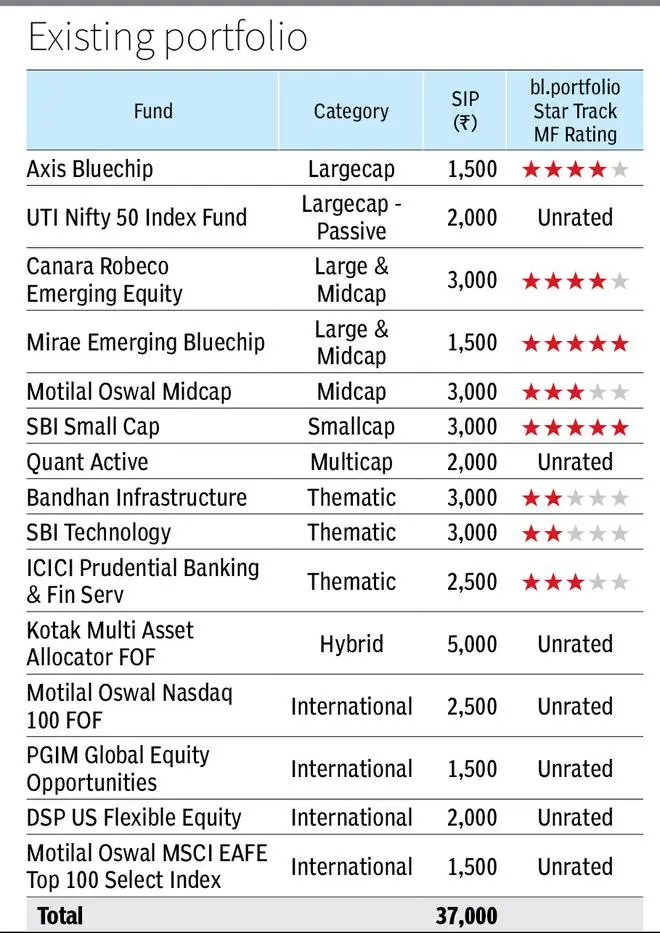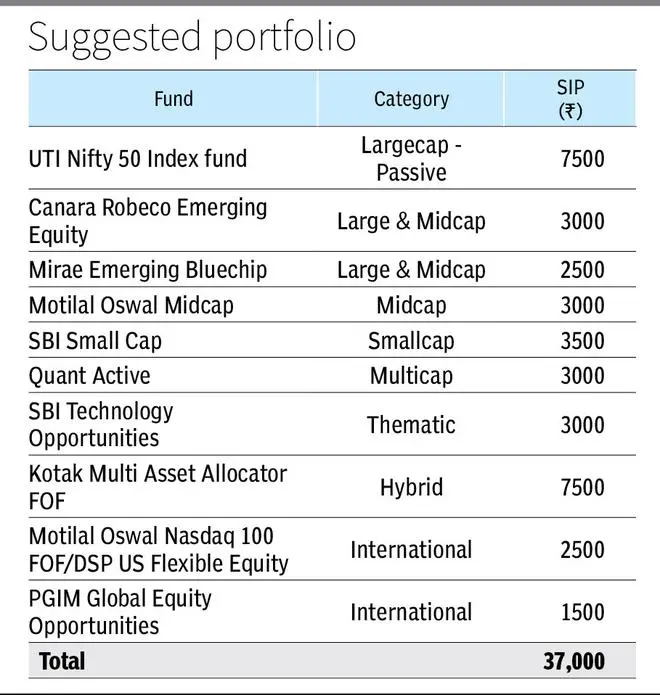

I am a reader of bl.portfolio for the past three years and I want your advice on realigning my MF SIPs. I am 35 years old, with a net monthly salary of ₹90,000. I have bank FDs of ₹3.5 lakh and investment in stocks around ₹4.7 lakh. I invest additional sums in stocks too, whenever possible. I put in ₹50,000 per annum in NPS and have an NPS corpus of ₹3.94 lakh. I regularly invest in mutual funds through SIPs from 2017 and have a corpus of ₹10.9 lakh now. Currently, I invest ₹37,000 per month and can continue to do so. My risk appetite is medium.
Mohan
The spread of your investments suggest that you have put thought into diversifying your savings across financial products. Being young, you rightly seem to have a tilt to equities, going by the corpus you have in the form of direct investment in stocks as well as equity-oriented mutual funds. At the same time, you have ensured a reasonable allocation to debt in the form of bank FDs.

Coming to your fund portfolio, there are three observations: One, your objective and time horizon is not available. Hence, we will not be able to comment on the suitability of the funds from this perspective. Second, there are too many funds and, in some cases, multiple funds from the same category. Three, international funds now form 20 per cent of your monthly investments, which seems on the higher side. To address the second and the third issues, your monthly SIPs need to be realigned.

We have realigned your portfolio (see table), reducing the number of funds to 10 from the earlier 15. You can stop SIPs in two thematic funds, which have been somewhat middling performers over the long term — Bandhan Infrastructure and ICICI Prudential Banking & Financial Services. We also suggest passive funds for large-cap investing rather than active ones and hence, you can invest in UTI Nifty Index fund alone in the large-cap category.
Among international funds, you can choose to stay with one of the US-focused funds among the two you are investing in. The NASDAQ 100 index is not fully tech-focused and does provide diversification across sectors, which the DSP US Flexible Equity fund provides too.
Also read: New-age stock scams and how to spot them
As per its latest portfolio, the PGIM fund has 50 per cent exposure outside the US, predominantly in Europe. This will be complementary to the US-focused fund in your portfolio. With these two funds, you will have key geographies covered. Note that when recommending international funds, we have assumed that these fund houses are continuing to accept SIPs.
We have also reallocated the sums you are investing in the funds to suit a moderate risk appetite. After the rejig, high risk international, thematic and mid-/small-cap category funds will constitute only about 35-40 per cent of your SIPs.
As regards your NPS, it is best you continue investing whether you choose the new tax regime or the old tax regime.
While you can use direct equities and equity-oriented mutual funds for the equity part of your asset allocation, you can use the NPS along with FDs for the debt part. NPS debt funds, which invest in corporate bonds (Scheme C) and gilts (Scheme G), have outdone similar mutual fund categories over the long term.
Published on May 13, 2023

Comments
Comments have to be in English, and in full sentences. They cannot be abusive or personal. Please abide by our community guidelines for posting your comments.
We have migrated to a new commenting platform. If you are already a registered user of TheHindu Businessline and logged in, you may continue to engage with our articles. If you do not have an account please register and login to post comments. Users can access their older comments by logging into their accounts on Vuukle.